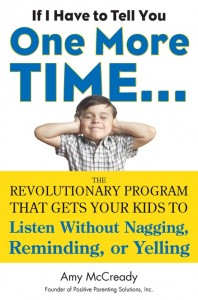Do you snack every night in front of the television? Do you drink a little too much when you are out with your friends? Do you ever find that you’ve smoked a whole pack of cigarettes, bitten off half your nails, or eaten an entire bag of Doritos without realizing you were doing it?
That’s the real problem when it comes to ridding yourself of bad habits – back in the beginning, when the behavior was new, it was something you did intentionally and probably consciously. But do anything enough times, and it becomes relatively automatic. In other words, you don’t even need to know that you are doing it.
In fact, as new research shows, you don’t even need to want to do it. If you develop the habit of snacking in front of your TV at night, how hungry you are or how tasty the snack is will no longer determine whether or how much you eat.
Many bad habits operate mindlessly, on autopilot. They are triggered by the context (e.g., watching TV, socializing, feeling stressed), rather than by any particular desire to engage in the behavior. So the key to stopping a bad habit isn’t making a resolution – it’s figuring our how to turn off the autopilot. It’s learning to disrupt the behavior, preferably before it starts.
Take for example a recent study of movie theater popcorn-eating. Researchers invited a group of people to watch fifteen minutes of movie previews while seated in a real movie theater. They gave the participants free bags of popcorn, and varied whether the popcorn was fresh or stale. (The stale popcorn was actually a week old. Yuck.) Then they measured how much popcorn each person ate.
Not surprisingly, everyone who got the stale popcorn reported liking it less than those who got fresh. And people with a weak popcorn habit (i.e., those who didn’t usually eat popcorn at the movies) ate significantly more fresh popcorn than stale. But here’s the kicker – for people with a strong popcorn habit (i.e., those who always ordered popcorn at the movies) it didn’t matter how stale the popcorn was! They ate the same amount, whether it was an hour old, or seven days old.
That’s worth thinking about for a moment – people with a strong habit were eating terrible popcorn, not because they didn’t notice it was terrible, but because it didn’t matter. The behavior was automatic, not intentional. So if tasting like Styrofoam won’t keep you from eating something, what will?
The researchers found that there were, in fact, two effective ways to disrupt the automatic popcorn-eating.
First, you can disrupt the habit by changing the context. When they conducted the same study in the context of a conference room, rather than a movie theater, people with strong popcorn habits at the movie theater stopped eating the stale popcorn. The automatic popcorn-eating behavior wasn’t activated, because the situational cues were changed.
If you have a habit you’d like to break, spend some time thinking about the situations in which it most often occurs. If you snack in front of the TV at night, consider doing something else in the evenings for a while – reading a good book, spending time with friends or family, even surfing the web. Any alternative activity is less likely to trigger mindless eating. If you just can’t give up your favorite shows, you might try rearranging the room, or sitting in a different chair – anything that alters the context can help.
Second, you can disrupt a habit by changing the method of performance. In another study, the researchers found that asking strong-habit popcorn eaters who were in a movie theater to eat with their non-dominant hand stopped them from eating the stale popcorn, too.
So if you can’t change the situation, you can change the way the habit gets executed. If you mindlessly eat or smoke with your right hand, try only using your left. If you mindlessly drink from the glass that the bartender keeps refilling, try sitting at a table instead of the bar so you’ll have to consciously get up and ask for a refill. Making the behavior a little more difficult or awkward to perform can be a great way to throw a wrench in the works.
Too often, we blame our failures on the wrong things. When it comes to ridding ourselves of bad habits, we usually chalk our difficulties up to a lack of commitment, or willpower. But as I’ve argued in my new book Succeed: How We Can Reach Our Goals, conquering your behavioral demons needs to start with understanding how they really work, and applying the most effective strategy. In this case, success comes from not making it quite so easy for your autopilot to run the show.

